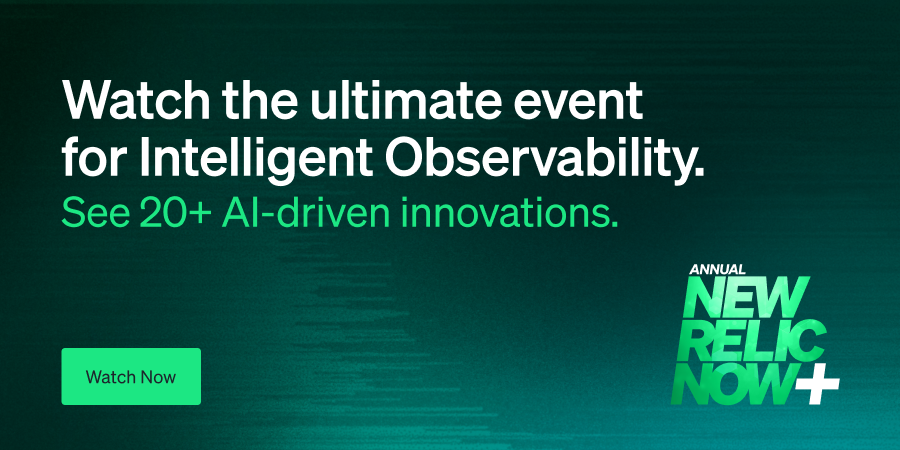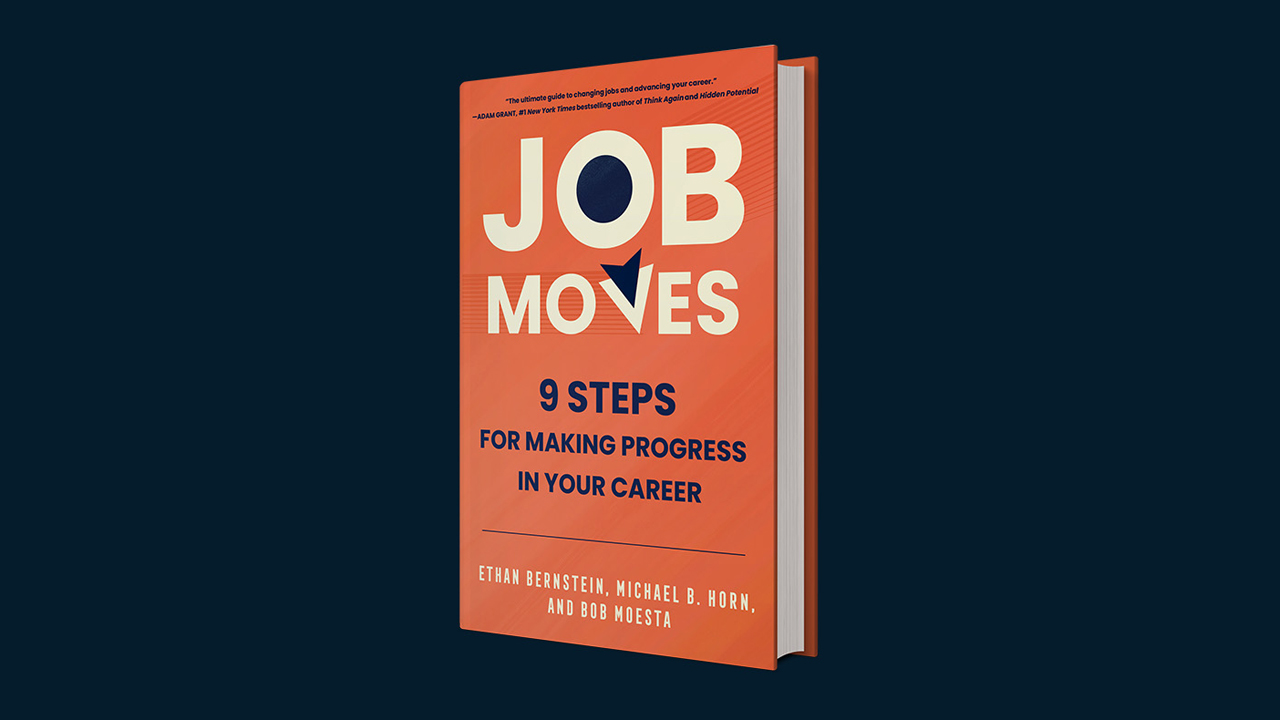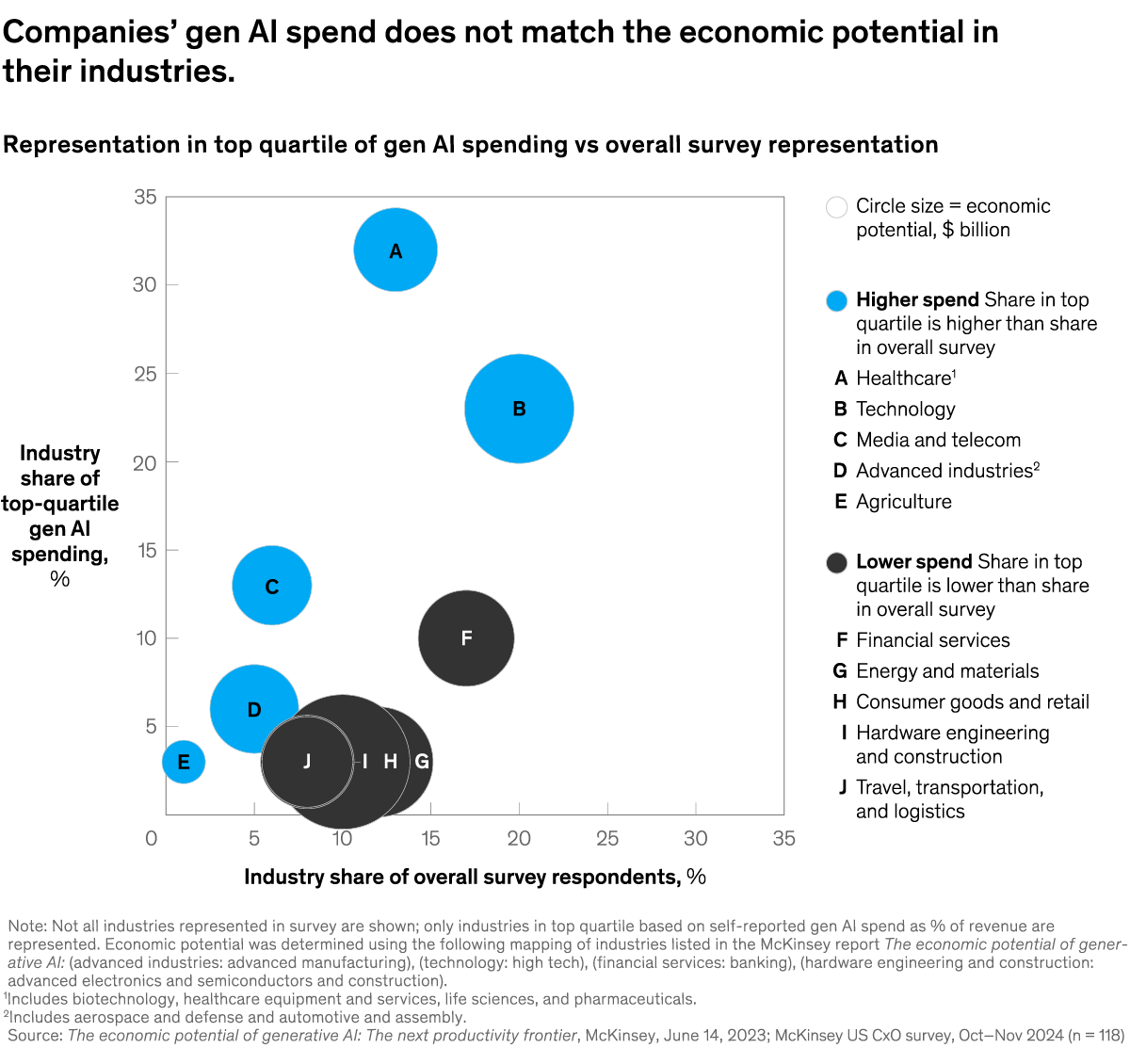Archives
- By thread 5226
-
By date
- June 2021 10
- July 2021 6
- August 2021 20
- September 2021 21
- October 2021 48
- November 2021 40
- December 2021 23
- January 2022 46
- February 2022 80
- March 2022 109
- April 2022 100
- May 2022 97
- June 2022 105
- July 2022 82
- August 2022 95
- September 2022 103
- October 2022 117
- November 2022 115
- December 2022 102
- January 2023 88
- February 2023 90
- March 2023 116
- April 2023 97
- May 2023 159
- June 2023 145
- July 2023 120
- August 2023 90
- September 2023 102
- October 2023 106
- November 2023 100
- December 2023 74
- January 2024 75
- February 2024 75
- March 2024 78
- April 2024 74
- May 2024 108
- June 2024 98
- July 2024 116
- August 2024 134
- September 2024 130
- October 2024 141
- November 2024 171
- December 2024 115
- January 2025 216
- February 2025 140
- March 2025 220
- April 2025 233
- May 2025 239
- June 2025 303
- July 2025 38
-
From chaos to confidence: accelerating API governance maturity
Tyk Webinar | From chaos to confidence: accelerating API governance maturity
Discover how a universal API governance platform can streamline processes and scale governance maturity.Hi Md Abul,
Managing APIs is fraught with chaos and uncertainty - but what if you could turn that around? On 27th March, we'll explore why it's not just about adding rigid controls and fighting complexity but about maturing API governance to empower organizations to scale and innovate confidently. We'd love for you to join our latest webinar and learn about it!
From chaos to confidence: Accelerating API governance maturity with TykWhy should you tune in?
We're diving into how a universal API governance platform can simplify the complexities of the API economy by giving teams complete visibility, flexible policies, and automated guardrails. Plus, we'll walk you through the API governance toolkit and how you can use it to design a comprehensive governance strategy that works!Here's what you'll get out of it:

Why a universal API governance platform enables future-readiness

How the API governance toolkit can help you get structured and measurable results

Scalable strategies to keep your governance policies consistent across your teams and environments

How Tyk's governance platform helps streamline governance and makes policy enforcement a breeze
Join us as we break down how a universal API governance platform can bring order to the chaos, keep your ecosystem secure, and help you scale with ease. Plus, get an exclusive sneak peek of Tyk’s governance platform in action - because who doesn’t love a good behind-the-scenes look? See you there!
📅 Date: March 27th 2025
🕙 Time: 10:00 AM EST/ 2:00 PM GMT
📍 Location: Zoom webinar, discussion, demo
See you soon,
Budha and teamTyk, Huckletree 199 Bishopsgate, Broadgate, London, City of London EC2M 3TY, United Kingdom, +44 (0)20 3409 1911
by "Budha from Tyk" <budha@tyk.io> - 11:25 - 11 Mar 2025 -
Explore high-quality customized packaging solutions at Zhongshan Tianchen New Materials Co., Ltd.
Dear info,
Greetings from Zhongshan Tianchen New Materials Co., Ltd.!
My name is Anna, and I am glad to introduce you to our one-stop packaging material procurement platform, backed by over 20 years of expertise in the film packaging industry.
We focus on the film packaging, including POF environmental protection heat shrink film, PVC shrink film, PVC label film, PE shrink film, OPP&CPP heat seal film. We will use high-quality products and professional services to provide customers with effective package material procurement solutions, create value for customers and achieve a win-win situation. Our packaging materials will make your products more attractive.
What packaging materials do you want to find? I can customized it for you, when you offer the detail information, such as what packaging machine that you use and what product you want to package. We can offer you the effective solutions that you need.
Thank you for considering Zhongshan Tianchen New Materials Co., Ltd. as your packaging material partner. We look forward to the opportunity to serve you and help your products shine.
Best regards,
Anna Yan
Zhongshan Tianchen New Materials Co., Ltd.
TeL: 86-18938732681
WhatApp/Wechat: 86-13420303721
Email: sales@tcnmaterials.com
by "Schied Raisley" <schiedraisley@gmail.com> - 09:04 - 11 Mar 2025 -
Feedback on Workflow Builder
Hi,
I noticed you recently filled out our form. Just wanted to check in and see how your experience with Workflow Builder has been so far. Have you had a chance to try it out yet?
If there’s any feedback or thoughts to share, they’d be greatly appreciated! And of course, if any help or a quick walkthrough is needed, feel free to reach out.
Thanks,
Ruslana
by "Ruslana Brykaliuk" <ruslana.brykaliuk@synergycodes.com> - 06:45 - 11 Mar 2025-
Re: Feedback on Workflow Builder
Hi,
Just following up on my previous message—did you get a chance to explore Workflow Builder yet? I'd love to hear any initial impressions or questions you might have!
Thanks,
Ruslana

by "Ruslana Brykaliuk" <ruslana.brykaliuk@synergycodes.com> - 10:17 - 17 Mar 2025-
Re: Feedback on Workflow Builder
Hi,
Hope you’re doing well!
Just wanted to touch base and see if you’ve had a moment to check out the Workflow Builder. No rush—whenever you have the time, I’d be interested to hear what you think.
Thanks,
Ruslana
by "Ruslana Brykaliuk" <ruslana.brykaliuk@synergycodes.com> - 10:25 - 24 Mar 2025
-
-
-
2X your learning. Watch the New Relic Now+ recording any way you like.
New Relic
See how Intelligent Observability drives faster recovery, smarter innovation, and optimized costs.

After New Relic Now+ on February 27th, here’s a follow up on how New Relic’s biggest launch of new innovations can address your top priorities:
- 20+ new innovations, including AI-powered predictions and agentic integrations.
- Real-world gains: How Intelligent Observability fuels business uptime and developer velocity.
- Customer insights from American Red Cross and New York Life.
- Training toward New Relic certifications, and deep dive demos into new capabilities.
The event recording is ready, giving you a unique way to explore the future of observability.
Have questions or are curious about how Intelligent Observability can benefit your business? Please get in touch.
View in browser
This email was sent to info@learn.odoo.com. Update your email preferences.For information about our privacy practices, see our Privacy Policy.
Need to contact New Relic? You can chat or call us at +44 20 3859 9190
Strand Bridge House, 138-142 Strand, London WC2R 1HH
© 2025 New Relic, Inc. All rights reserved. New Relic logo are trademarks of New Relic, Inc.
by "New Relic" <emeamarketing@newrelic.com> - 06:00 - 11 Mar 2025 -
Final Reminder: Don’t Miss Out on an Unforgettable Golf Day
Our remaining slots for this year are nearly fully booked... Hello Sir/Madam,
This is our final message about your potential corporate golf day at Poulton Park Golf Club. Our remaining slots for this year are nearly fully booked, and we don’t want you to miss out on a truly remarkable experience.
Here’s what’s on the line:
- All-Inclusive Management: From invitations to on-the-day logistics, we’ll handle it.
- State-of-the-Art Tech: Live scoring, drones, and screens to entertain and inform your guests.
- Flexible Payment Plans: Spread the cost in a way that suits your budget and timeline.
If you’d like the peace of mind that comes from having everything handled for you, now’s the time to act. Reply to this email or give me a ring on +44 (0)7441 351 701 to confirm your interest, and we’ll do our best to accommodate your needs.

Thank you for your time. We hope to help you create a golf day that exceeds all your expectations!
Best regards,
Josh Budz
Senior Business Development Manager
corporategolfday.com
+44 (0)121 2709072
+44 (0)7441 351 701


by "Josh - Corporate Golf Day" <info@corporategolfer.co.uk> - 05:02 - 11 Mar 2025 -
Introducing Recruit: Hire Faster with Your Free Trial
Introducing Recruit: Hire Faster with Your Free Trial

Hi MD,
We know hiring globally can be overwhelming—disconnected systems, compliance headaches, and the constant pressure to fill roles fast. That’s why we built Recruit, a smarter, more efficient platform designed to simplify your hiring process from start to finish.
No credit card required. Try it now!
🌟 How Recruit Makes Global Hiring Simple 🌟
.png?width=480&upscale=true&name=Talent%20Insights(1).png)
📊 Know Where to Find Talent
Gain real-time insights on talent availability, salaries, and local hiring conditions, so you can focus your efforts in the right markets and hire smarter.
📢 Post Jobs That Attract the Right Candidates
Easily create job posts tailored to your specific needs—location, time zone, and remote preferences—so you get qualified candidates from the start.
.png?width=480&upscale=true&name=Job%20Posting(2).png)
.png?width=480&upscale=true&name=Recommended(1).png)
🤖 Get Matched with the Best Candidates
Let Recruit’s AI surface top candidates instantly, based on skills, location, and compliance—reducing disqualifications and speeding up your hiring process.
🔍 Source With Ease
Skip filters and complex boolean strings—just type what you need. Search through millions of global profiles to find the right candidates quickly and effortlessly.


📈 Track Your Candidates in One Place
Manage your candidates from application to hire in a single system. No more juggling multiple tools.
📝 Onboard New Hires with Ease
Hire confidently with Remote’s EOR integration, ensuring compliance and smooth onboarding for new hires worldwide.
.png?width=480&upscale=true&name=Onboarding%20Process(2).png)
Don’t wait—try Recruit today and transform your recruitment process.







You received this email because you are subscribed to
Remote News & Offers from Remote Europe Holding B.V
Update your email preferences to choose the types of emails you receive.
Unsubscribe from all future emailsRemote Europe Holding B.V
Copyright © 2025 Remote Europe Holding B.V All rights reserved.
Kraijenhoffstraat 137A 1018RG Amsterdam The Netherlands
by "Remote Team" <hello@talent.remote.com> - 02:06 - 11 Mar 2025 -
How can women succeed more at work?
On McKinsey Perspectives
Overcome career obstacles
by "Only McKinsey Perspectives" <publishing@email.mckinsey.com> - 11:26 - 10 Mar 2025 -
Last chance: How to drive growth with SaaS ERP
 Time is running out to register for our webcast, happening tomorrow.
Time is running out to register for our webcast, happening tomorrow.
During this session with digital transformation expert Aušra Gustainiene, you’ll learn how to:
- Integrate SaaS ERP with key business domains for unstoppable growth.
- Use real-time data for smarter decisions with help from AI.
- Unlock tangible outcomes through real-world use cases.
Don’t miss this chance to see how AI-enabled cloud ERP can help your business grow. Register today.

Contact us
See our complete list of local country numbers



SAP (Legal Disclosure | SAP)
This e-mail may contain trade secrets or privileged, undisclosed, or otherwise confidential information. If you have received this e-mail in error, you are hereby notified that any review, copying, or distribution of it is strictly prohibited. Please inform us immediately and destroy the original transmittal. Thank you for your cooperation.
You are receiving this e-mail for one or more of the following reasons: you are an SAP customer, you were an SAP customer, SAP was asked to contact you by one of your colleagues, you expressed interest in one or more of our products or services, or you participated in or expressed interest to participate in a webinar, seminar, or event. SAP Privacy Statement
This email was sent to info@learn.odoo.com on behalf of the SAP Group with which you have a business relationship. If you would like to have more information about your Data Controller(s) please click here to contact webmaster@sap.com.
This offer is extended to you under the condition that your acceptance does not violate any applicable laws or policies within your organization. If you are unsure of whether your acceptance may violate any such laws or policies, we strongly encourage you to seek advice from your ethics or compliance official. For organizations that are unable to accept all or a portion of this complimentary offer and would like to pay for their own expenses, upon request, SAP will provide a reasonable market value and an invoice or other suitable payment process.
This e-mail was sent to info@learn.odoo.com by SAP and provides information on SAP’s products and services that may be of interest to you. If you received this e-mail in error, or if you no longer wish to receive communications from the SAP Group of companies, you can unsubscribe here.
To ensure you continue to receive SAP related information properly, please add sap@mailsap.com to your address book or safe senders list.
by "SAP" <sap@mailsap.com> - 11:07 - 10 Mar 2025 -
Hippoo Cash coupons worth US$25 million are being distributed.The quantity id limited,don’t miss it

WAIT, there is something you seem to be interested in,
and Cash vouchers with a total value of US$1.5 billion are being distributed.
The quantity is limited. Don't miss it.
Dear customers,
We recommended the product you may interested in. There are great quality clothes and shoes on sale at super low prices. It takes you 1 minute to register a Hippoo Haul account, and you will immediately get a $10 balance to use to purchase any product.
First come, First served. Don’t miss out!
You may like:

Limited time low price, many benefits are being distributed
by "CUomo Emo" <cuomoemo454@gmail.com> - 12:24 - 10 Mar 2025 -
[FHL 10 ENCORE] We’re getting started soon!
Are you registered? We go live TODAY!…Hey it’s Todd!
I’ve been hitting you up all week about FHL 10 ‘The Last Dance’ Encore from Las Vegas, and now it’s officially here!
Today is the day.
I hope you’ve registered. If not please register here so we can get you the special ACCESS LINK (which will be emailed to you) to watch.
You don’t want to miss this encore! It was the last FHL, and we definitely went out with a bang. Some of the best presentations I’ve ever seen at FHL.
Over the next three days:
You’ll see nearly ALL of the presentations from FHL 10 and we’ll also have some interactive sessions you’ll want to participate in.
We’re starting this morning, so make sure you’re registered.
Three days of FHL awesomeness, here we come!
See you there!
© Etison LLC
By reading this, you agree to all of the following: You understand this to be an expression of opinions and not professional advice. You are solely responsible for the use of any content and hold Etison LLC and all members and affiliates harmless in any event or claim.
If you purchase anything through a link in this email, you should assume that we have an affiliate relationship with the company providing the product or service that you purchase, and that we will be paid in some way. We recommend that you do your own independent research before purchasing anything.
Copyright © 2018+ Etison LLC. All Rights Reserved.
To make sure you keep getting these emails, please add us to your address book or whitelist us. If you don't want to receive any other emails, click on the unsubscribe link below.
Etison LLC
3443 W Bavaria St
Eagle, ID 83616
United States
by "Todd Dickerson (ClickFunnels)" <noreply@clickfunnelsnotifications.com> - 11:18 - 10 Mar 2025 -
How is your transformation going?
How is your transformation going?
Just wanted to check in to see if you've seen our new Business Transformation Handbook?Hi MD Abul,
I hope all is well with you! I wanted to check in to see if you saw our new white paper the Business Transformation Playbook? It is packed full of digital transformation best practices and proven tactics to ensure your project is successful.
If you have downloaded it, I'd welcome and appreciate any feedback.
How is your business transformation going in general? Anything my team and I can help with? I am happy to be an informal sounding board for you and your team.
Looking forward to hearing from you!
Best,
Eric
Best regards,
Eric Kimberling
CEO and Founder
+1-720-837-3604
www.ThirdStage-Consulting.com
Some additional information in one lineThird Stage Consulting 384 Inverness Pkwy Suite Englewood Colorado
You received this email because you are subscribed to Our Blog Subscription from Third Stage Consulting .
Update your email preferences to choose the types of emails you receive.
Unsubscribe from all future emails
by "Eric Kimberling" <eric.kimberling@thirdstage-consulting.com> - 10:49 - 10 Mar 2025 -
⏰ FINAL CALL: FHL10 Encore Starts TODAY!!
Make sure to register hereHey it’s Russell and today’s the day!!!
FHL 10 ‘The Last Dance’ Encore from Las Vegas is happening this morning!!!
If you haven’t registered yet, this is your last chance to grab your access link before it all begins.
This isn’t just another replay…
It’s the FINAL FHL 10 Encore, and we’re doing it LIVE!💥 You’ll get the BIGGEST business breakthroughs from the greatest marketing minds on the planet.
💥 You’ll experience the energy and emotion of the last-ever FHL… one final time.
💥 You’ll get behind-the-scenes insights and strategies you won’t find anywhere else.
And my amazing team will be there with me LIVE, answering your questions and helping you get the most out of every session.
This is it. If you miss this, you miss it forever.
👉 REGISTER FOR FHL 10 ‘THE LAST DANCE’ ENCORE NOW →See you there!
Russell Brunson
P.S. Don’t forget, you’re just one funnel away…
P.P.S. One last thing... Just ONE idea from today could change your business forever. But only if you show up.
👉 Get your access link now before it's too late!Marketing Secrets
3443 W Bavaria St
Eagle, ID 83616
United States
by "Russell Brunson" <newsletter@marketingsecrets.com> - 10:45 - 10 Mar 2025 -
How to conquer the ‘broken rung’: A leader’s guide
Leading Off
Shrink the gap Brought to you by Alex Panas, global leader of industries, & Axel Karlsson, global leader of functional practices and growth platforms
Welcome to the latest edition of Leading Off. We hope you find our insights useful. Let us know what you think at Alex_Panas@McKinsey.com and Axel_Karlsson@McKinsey.com.
—Alex and Axel
The glass ceiling has long been considered the main barrier to women’s advancement into senior leadership. But McKinsey research reveals that women encounter a “broken rung” on the corporate ladder much earlier in their careers, when they are less likely than men to be promoted to their first manager role. In 2024, for instance, only 81 women were promoted to manager for every 100 men. How can women transcend this broken rung and make the most of their opportunities to advance? This week, we look at steps women can take to gain the critical experience needed to win at work and to narrow the gender gap.
For both men and women, roughly half of their lifetime earnings are based on their natural talents and education, with the rest coming from the value of the skills, experiences, and wisdom they gain at work. But women tend to accrue less of this “experience capital” during their careers, which inhibits their promotion rates and ultimate earning potential, according to McKinsey Senior Partners Kweilin Ellingrud, Lareina Yee, and María del Mar Martínez, authors of The Broken Rung: When the Career Ladder Breaks for Women—and How They Can Succeed in Spite of It. They suggest several ways in which women can gain more experience capital, such as focusing on high-growth occupations and industries and developing technology skills that can help them in their current roles and beyond. “Companies can take important steps to fix the broken rung by making sure employees are getting equal opportunities for leadership and promotion,” the authors say. “But waiting for companies to change is not a strategy.” To learn more, register for a McKinsey Live webinar with the authors on Tuesday, March 11.
That’s the percentage of C-suite positions held by women in corporate America in 2024, compared with 17 percent in 2015, according to McKinsey’s tenth-anniversary Women in the Workplace research, which was conducted with LeanIn.Org. McKinsey Senior Partners Alexis Krivkovich and Lareina Yee and their coauthors note that women have made progress in moving through the corporate pipeline but remain underrepresented at every level, from entry-level roles (48 percent of which are held by women) to managers (39 percent) to vice presidents (34 percent).
That’s McKinsey Senior Partners Kweilin Ellingrud, Sven Smit, Chris Bradley, and Olivia White and coauthors in a McKinsey Global Institute report on how time and career choices can shape the US gender pay gap. The report finds that over a 30-year career, women earn about $500,000 less than men, on average. This gap is due to a range of factors, including women spending more time away from work and tending to move to jobs that are likelier to shrink than grow.
Reaching the next rung of the corporate ladder is a visible measure of career progress, but it’s not always the most important one. Job seekers should focus on what gives them energy and direction and what capabilities they want to develop, according to the authors of Job Moves: 9 Steps for Making Progress in Your Career. “If you can prioritize which of those are the most important, you can say, ‘OK, I’m willing to trade off on the bigger title or the more prestigious company because I get to do all these other things that are really important to me,’” says Michael B. Horn, an adjunct lecturer at Harvard’s Graduate School of Education, in an episode of Author Talks. His coauthor Ethan Bernstein, an associate professor at Harvard Business School, adds that successful job movers they interviewed for the book “thought about not just ‘being hired by’ their next organization or job. Rather, they considered ‘hiring’ their next job based on the progress they wanted to make in their own careers.”
A decade ago, demand for AI prompt engineers was nonexistent. Today, it’s skyrocketing, and innovation will continue to spawn brand-new jobs in the years to come. In this environment, women can maximize their career potential by embracing a lifelong-learning mindset. McKinsey’s Jacqueline Brassey and coauthors identify seven practices to help people become lifelong learners, including establishing a growth mindset, developing multiple areas of expertise, and stretching outside of one’s comfort zone. People with a growth mindset “believe that their true potential is unknown because it is impossible to foresee what might happen as a result of passion, effort, and practice,” the authors say. “Ultimately, they may achieve more of their potential than someone with a fixed mindset.”
Lead by taking control of your career journey.
— Edited by Eric Quiñones, senior editor, New York
Share these insights
Did you enjoy this newsletter? Forward it to colleagues and friends so they can subscribe too. Was this issue forwarded to you? Sign up for it and sample our 40+ other free email subscriptions here.
This email contains information about McKinsey’s research, insights, services, or events. By opening our emails or clicking on links, you agree to our use of cookies and web tracking technology. For more information on how we use and protect your information, please review our privacy policy.
You received this email because you subscribed to the Leading Off newsletter.
Copyright © 2025 | McKinsey & Company, 3 World Trade Center, 175 Greenwich Street, New York, NY 10007
by "McKinsey Leading Off" <publishing@email.mckinsey.com> - 05:05 - 10 Mar 2025 -
Can auto dealerships boost sales productivity?
On McKinsey Perspectives
A new playbook Brought to you by Alex Panas, global leader of industries, & Axel Karlsson, global leader of functional practices and growth platforms
Welcome to the latest edition of Only McKinsey Perspectives. We hope you find our insights useful. Let us know what you think at Alex_Panas@McKinsey.com and Axel_Karlsson@McKinsey.com.
—Alex and Axel
•
Stagnant productivity. From next-generation core systems to AI and digital sales platforms, US auto retailers have implemented multiple new technologies over the past decade. Despite sometimes significant investments, though, dealer productivity has stalled. An analysis of National Automobile Dealers Association reports from 2015 to 2024 reveals that vehicle sales per employee averaged between 14 and 16 each year, McKinsey Senior Partner Inga Maurer and coauthors write.
—Edited by Belinda Yu, editor, Atlanta
This email contains information about McKinsey's research, insights, services, or events. By opening our emails or clicking on links, you agree to our use of cookies and web tracking technology. For more information on how we use and protect your information, please review our privacy policy.
You received this email because you subscribed to the Only McKinsey Perspectives newsletter, formerly known as Only McKinsey.
Copyright © 2025 | McKinsey & Company, 3 World Trade Center, 175 Greenwich Street, New York, NY 10007
by "Only McKinsey Perspectives" <publishing@email.mckinsey.com> - 01:32 - 10 Mar 2025 -
🟢 TOMORROW: LIVE strategies to explode your business!
[Link] Make sure to RSVP hereQuick reminder that the FHL Encore starts TOMORROW!! This isn’t just some rehashed replay... it is a LIVE, 3-day virtual event where I’ll be on stage, breaking down the biggest business breakthroughs alongside some of the greatest marketing minds on the planet.
- If you’re stuck, this will get you UNSTUCK.
- If you’re just starting, this will give you the exact roadmap to follow.
- If you’re scaling, this will accelerate your momentum.
This event is about one thing: GROWTH.
- More customers
- More revenue
- More clarity on your next big move
And you won’t be going through it alone! My amazing team will be there LIVE to answer your questions and help you take action on everything you learn.
This might be the last chance you ever get to see these presentations… and I promise, just ONE idea from this event could change your business forever.
🚨 DAY ONE STARTS TOMORROW! 🚨
📅 March 10th, 2025 @ 8 AM PT / 9 AM MT / 10 AM CT / 11 AM ET
👉 GO HERE TO REGISTER FOR FHL 10 ‘THE LAST DANCE’ ENCORE NOW >>
This is your chance to be in the room (virtually!) with me and thousands of entrepreneurs ready to take action.Don’t miss it.
Three full days of life-changing presentations.
And hear me out on this. I don’t use the word life-changing lightly…
I am dead serious when I say… the presentations and the insights and inspiration people heard at the LAST EVER FHL quite literally changed lives! I’m already hearing stories!!
…If you were there, I want you to hear it again.
…If you missed it… I want you to experience this!!
REGISTER FOR FHL 10 ‘THE LAST DANCE’ ENCORE NOW >>
Russell Brunson
P.S. Don’t forget, you’re just one funnel away…
P.P.S. If you’re serious about growing your business this year, this is the event you can’t afford to skip. Register now before the doors close:
👉 GO HERE TO REGISTER FOR FHL 10 ‘THE LAST DANCE’ ENCORE NOW >>Marketing Secrets
3443 W Bavaria St
Eagle, ID 83616
United States
by "Russell Brunson" <newsletter@marketingsecrets.com> - 01:48 - 9 Mar 2025 -
[FHL 10 ENCORE!] Tomorrow is the day!
I put the link to register in this emailHey! It’s Todd!
The FHL 10 Encore starts tomorrow! Have you signed up?
The presentations and the insights and inspiration people heard at the LAST EVER FHL were amazing. I think it was our best FHL ever!
If you were there, you should join us again! If you missed it, this is your chance to watch the LAST FHL EVER!
Here are just some of the speakers you’ll hear:
Dr. Sonja Stribling reminded us that who we were in the past doesn’t define who we can become.
Prince EA had me taking notes like crazy with all the YouTube gems he was dropping!
Armand Morin pulled back the curtain and walked us through The Stack & Close.
The list goes way beyond this!
REGISTER FOR FHL 10 ‘THE LAST DANCE’ ENCORE NOW >>
Again, it all starts TOMORROW (Day one of three kicks off March 10th, 2025 @ 8am PT / 11am ET ).
See you there!
© Etison LLC
By reading this, you agree to all of the following: You understand this to be an expression of opinions and not professional advice. You are solely responsible for the use of any content and hold Etison LLC and all members and affiliates harmless in any event or claim.
If you purchase anything through a link in this email, you should assume that we have an affiliate relationship with the company providing the product or service that you purchase, and that we will be paid in some way. We recommend that you do your own independent research before purchasing anything.
Copyright © 2018+ Etison LLC. All Rights Reserved.
To make sure you keep getting these emails, please add us to your address book or whitelist us. If you don't want to receive any other emails, click on the unsubscribe link below.
Etison LLC
3443 W Bavaria St
Eagle, ID 83616
United States
by "Todd Dickerson (ClickFunnels)" <noreply@clickfunnelsnotifications.com> - 01:17 - 9 Mar 2025 -
Limited Dates Remaining at Poulton Park Golf Club - Book Now!
We’d love to give you priority on dates... Hello Sir/Madam,
We’ve been in touch because we genuinely believe your business could benefit from an exceptional golf day at Poulton Park Golf Club. We’d love to give you priority on dates before our calendar is fully booked.
Why act now?
- Limited Venue Availability: Prime slots are being taken quickly.
- Our Team’s Capacity: We only run a certain number of events per month to ensure unmatched quality.
- Maximum Branding Impact: Early booking gives us time to organise bespoke merchandise, graphics, and sponsorship for a standout event.
With our monthly finance options, there’s no reason to delay. Let’s secure your date and start planning the ultimate golf day.

Reply to this email or call +44 (0)7441 351 701 to lock in your slot or ask any questions you might have.
Best regards,
Josh Budz
Senior Business Development Manager
corporategolfday.com
+44 (0)121 2709072
+44 (0)7441 351 701


by "Josh - Corporate Golf Day" <info@corporategolfer.co.uk> - 04:35 - 9 Mar 2025 -
🎁 My Birthday Bonuses disappear at midnight!
Taking a quick break from my birthday celebrations (and a stop at my favorite, Waffle Me Up…) to make sure you saw the email I sent this morning!
I don’t want you to miss out on my Birthday Bonus gifts, so I’m re-sending it here:==== BEGIN ORIGINAL MESSAGE ====
Russell here!
I’m taking a quick break from some Saturday chores because... it's my birthday!!
But instead of getting gifts, I’m giving one to YOU… 🎁
I want to make sure you don’t miss out on the FHL 10 ‘The Last Dance’ Encore! Now, this isn’t some rehashed replay event.
I’M GOING TO BE THERE LIVE, ON STAGE, WITH YOU during the event.
My amazing team will also be there, answering your questions and helping you implement what you’re learning in real time.My Gift to YOU!!
🎁 Access to 10+ world-class presentations from the greatest marketing minds on the planet
🎁 Behind-the-scenes strategies that aren’t shared anywhere else
🎁 LIVE interaction with me & my team
🎁 Massive takeaways that can help you break through and hit your next big goal
🎁 No flights, no hotels, no huge expenses; you get the entire experience from homePlus, if you register before Midnight tonight, I'll also unlock these bonuses from previous FHL events:
- The BEST of my FHL Presentations!
- The Funnels - Proven, high-converting strategies, ready for you to implement!
- The Traffic - Ninja tactics to send floods of buyers to your funnels!
- The Ultimate Personal Development Sessions - Simple mindset shifts that can take you from zero to multi-millions!
These bonuses alone are worth thousands, but they’re yours FREE when you grab your FHL Encore ticket today!
REGISTER NOW TO JOIN US LIVE ON MONDAY!! >>
Now, I hear a lot of people say, “I just don’t have time for this…”
But the truth is: You don’t have time NOT to do this.Put everything aside.
Cancel meetings.
Tell someone else to deal with the fires.
Then zone in for 3 days at FHL 10 ‘The Last Dance’ Encore to get the ideas, inspiration, and motivation to EXPLODE your business in 2025!!
This is it. This is your shot. Don’t miss it.
OK… back to Spring cleaning and yard work… Unfortunately, the garage isn’t going to clean and organize itself!! Sigh….
REGISTER NOW TO JOIN US LIVE ON MONDAY!! >>
See you on Monday morning!
Russell Brunson
P.S. Don’t forget, you’re just one funnel away…
P.P.S. GO HERE TO REGISTER NOW TO JOIN US LIVE ON MONDAY!! >>
Marketing Secrets
3443 W Bavaria St
Eagle, ID 83616
United States
by "Russell Brunson" <newsletter@marketingsecrets.com> - 11:38 - 8 Mar 2025 -
[FHL 10 Encore!!!] We start LIVE on Monday!
FHL 10 ‘The Last Dance’... Link Inside!It’s Todd again!
I’m sending out a quick message here on a Saturday because I don’t want you to miss the FHL 10 ‘The Last Dance’ Encore!
If you haven’t already registered, GO HERE to sign up and attend the FHL 10 ‘The Last Dance’ Encore!
We will have THREE DAYS of FHL Encore and other exciting stuff for you to relive the magic of FHL 10.
Make sure you’re registered!
See you Monday morning!
© Etison LLC
By reading this, you agree to all of the following: You understand this to be an expression of opinions and not professional advice. You are solely responsible for the use of any content and hold Etison LLC and all members and affiliates harmless in any event or claim.
If you purchase anything through a link in this email, you should assume that we have an affiliate relationship with the company providing the product or service that you purchase, and that we will be paid in some way. We recommend that you do your own independent research before purchasing anything.
Copyright © 2018+ Etison LLC. All Rights Reserved.
To make sure you keep getting these emails, please add us to your address book or whitelist us. If you don't want to receive any other emails, click on the unsubscribe link below.
Etison LLC
3443 W Bavaria St
Eagle, ID 83616
United States
by "Todd Dickerson (ClickFunnels)" <noreply@clickfunnelsnotifications.com> - 09:48 - 8 Mar 2025 -
The week in charts
The Week in Charts
AI’s economic potential, gen AI enthusiasts, and more Share these insights
Did you enjoy this newsletter? Forward it to colleagues and friends so they can subscribe too. Was this issue forwarded to you? Sign up for it and sample our 40+ other free email subscriptions here.
This email contains information about McKinsey's research, insights, services, or events. By opening our emails or clicking on links, you agree to our use of cookies and web tracking technology. For more information on how we use and protect your information, please review our privacy policy.
You received this email because you subscribed to The Week in Charts newsletter.
Copyright © 2025 | McKinsey & Company, 3 World Trade Center, 175 Greenwich Street, New York, NY 10007
by "McKinsey Week in Charts" <publishing@email.mckinsey.com> - 03:50 - 8 Mar 2025

























